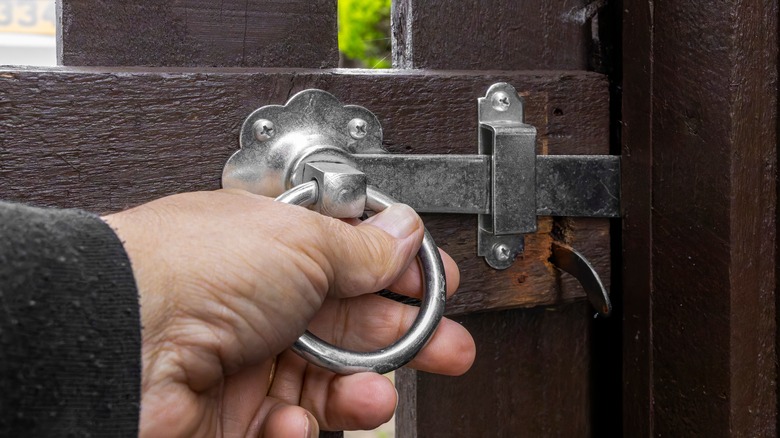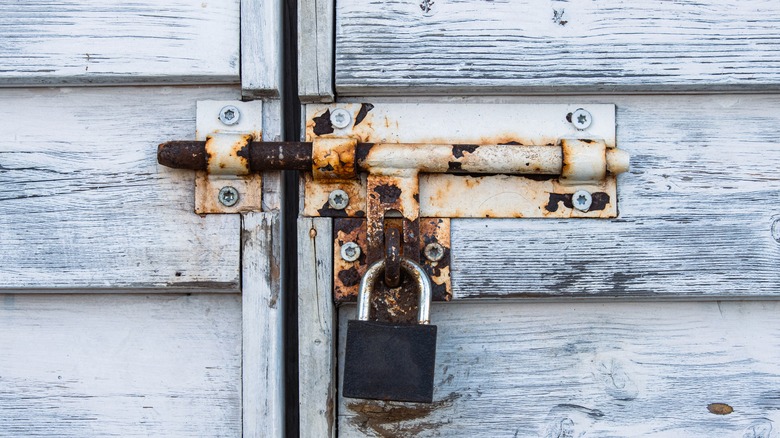How Fence Gate Hardware Can Make Or Break Your Design
We may receive a commission on purchases made from links.
Everyone has their own ideas about visual appeal, and that's great. It would be a dull world if we were all the same. That said, when you've spent time and effort building the perfect fence, the last thing you want is to ruin the effect with the wrong gate hardware. Good design isn't just about aesthetics but also how well the hardware functions.
A picket fence often benefits from classic hardware like models offered by Home Master Hardware. While some might prefer something a little more decorative (and there's plenty of choice), the subtlety suits the fence style. It's important that the pieces aren't too large or they can look clumsy. For contemporary gates — particularly vinyl — sleek rectangular lines will generally be more suitable. Unfortunately, matching sets aren't common, so finding hinges, handles, and latches can be time-consuming, but it's worth it when your gate looks exactly right. You'll also need to decide whether the fence gate latch should be operated from both sides or just the inside. The latter usually provides an uninterrupted appearance from the curb, though it makes entry more difficult.
Security should also be considered. A simple sliding bolt and padlock might be appropriate for a traditional gate. At the other end of the spectrum are electromagnetic locks that add a high-tech vibe. There are also Yale-type locks and those with number codes. Don't forget to check how the hardware is fitted in case it isn't suitable for your type of gate.
Materials can be as important as design
If you have a fence gate that makes a statement about your style, you certainly don't want the hardware to fall apart after six months. Most gate latches are steel, which is affordable and strong. The problem is that bare steel soon rusts, so it's usually powder-coated. Aluminum is often used for the gate itself and is highly resistant to corrosion, but it isn't as strong as steel and not really appropriate for latch mechanisms. Stainless steel is another tough option that doesn't rust. The catch is that it's more expensive. The same is true of brass. Though wrought iron was popular in the past, installation is a labor-intensive process, and it's hard to find unless your gate hardware is artisan-made.
Unfortunately, color options for fence gate hardware are limited. Black is probably most common, followed by chrome or other metal plating. It's difficult to find anything else, so it might be tempting to consider painting your hardware. It's possible, but there are challenges. Paint won't adhere well to powder coating or other protective finishes. You could buy plain steel and use a product like Rust-Oleum Enamel, so long as you remember that frequent rubbing may mean it has to be regularly reapplied. Finally, just as you need to be careful not to use the wrong nails in your fence, plain steel screws should not be used to mount your hardware on gates made of cedar, redwood, or oak. Tannins in the wood will eventually eat through the metal.

